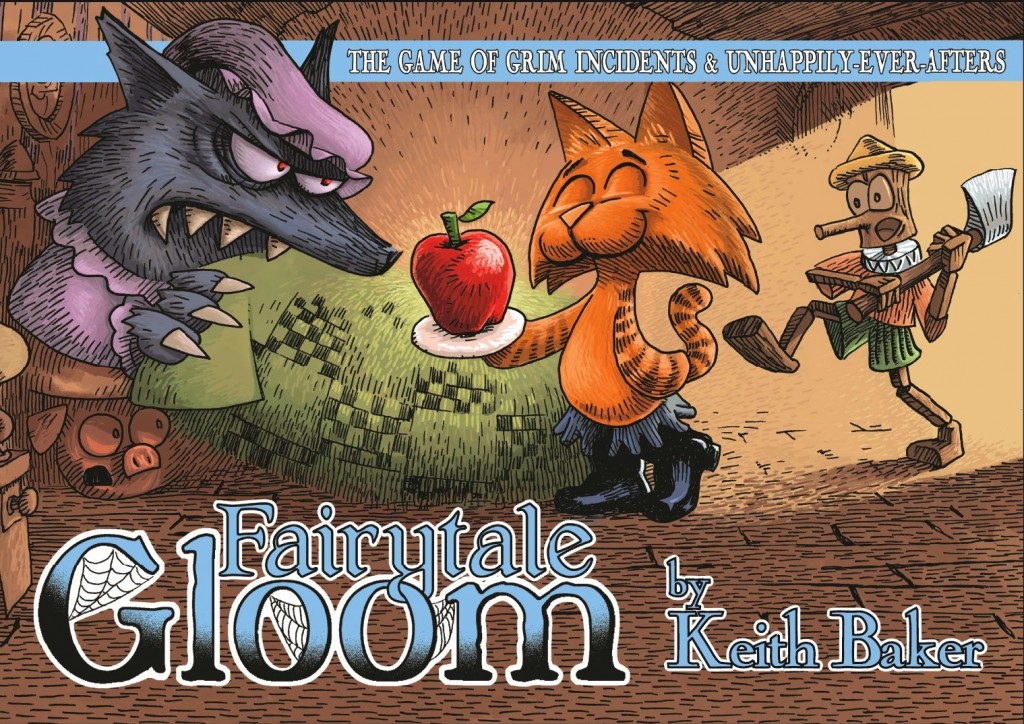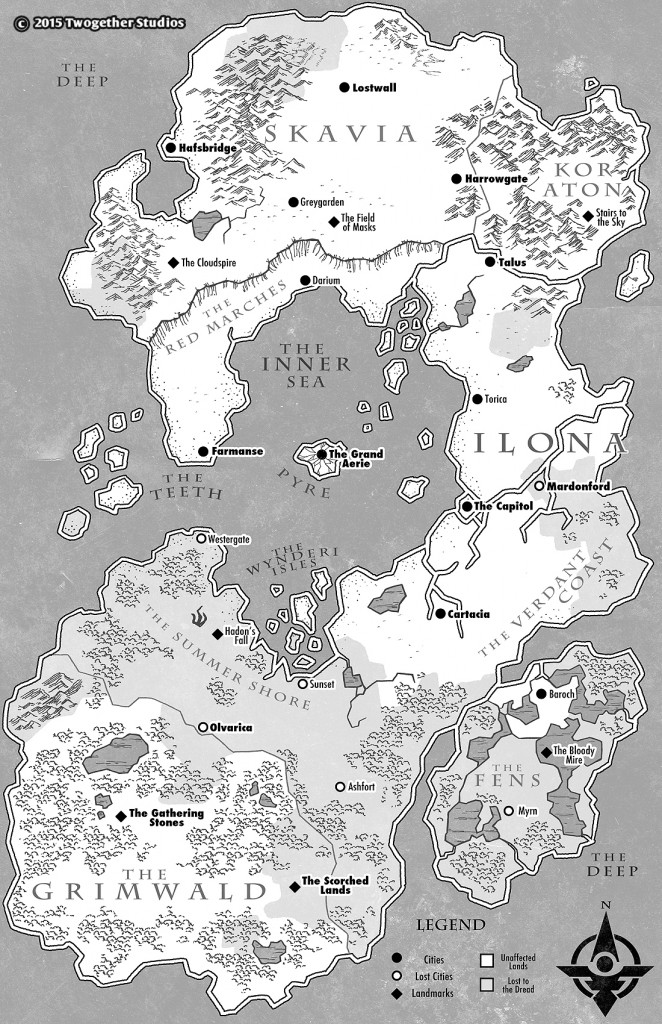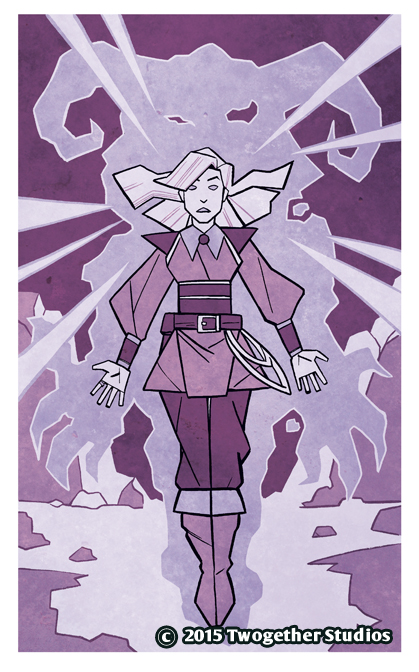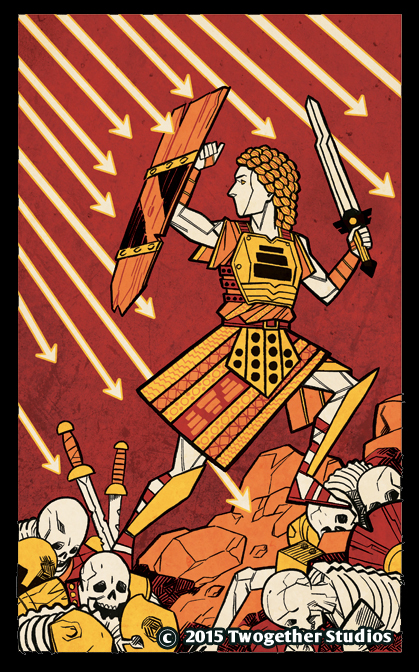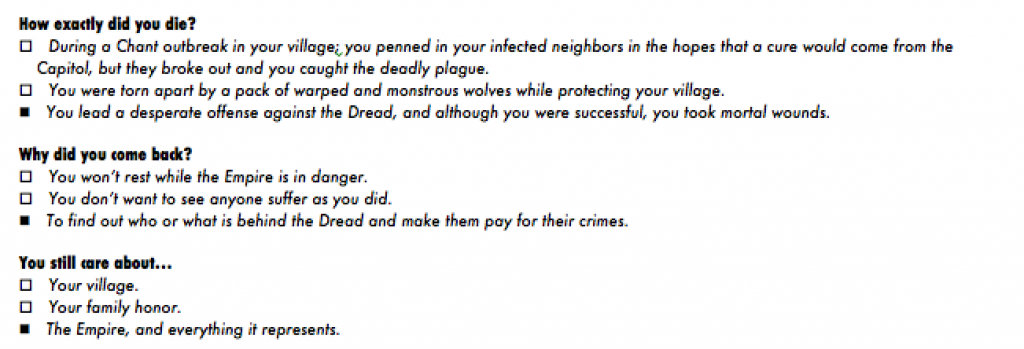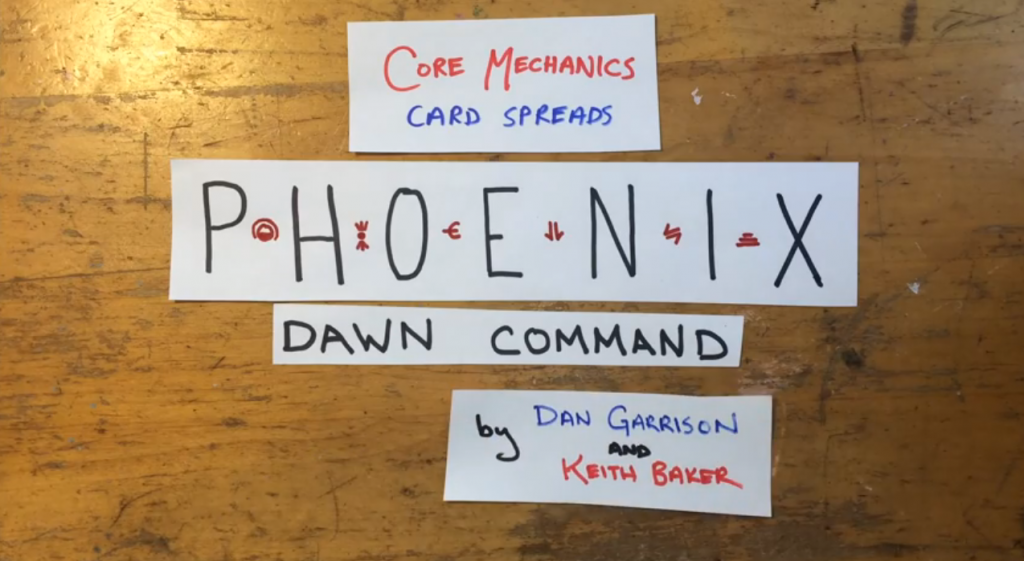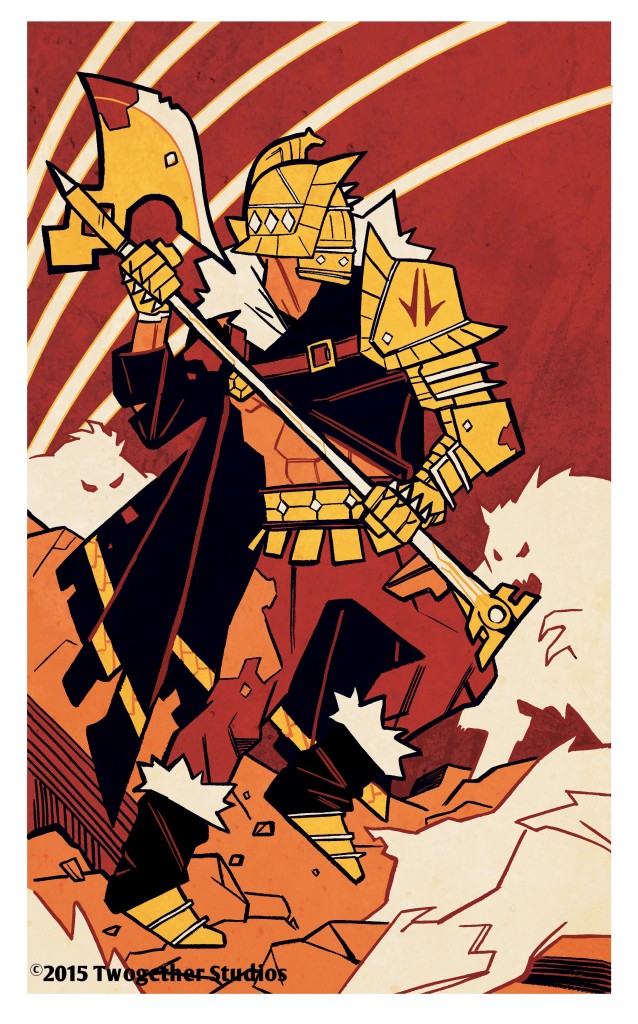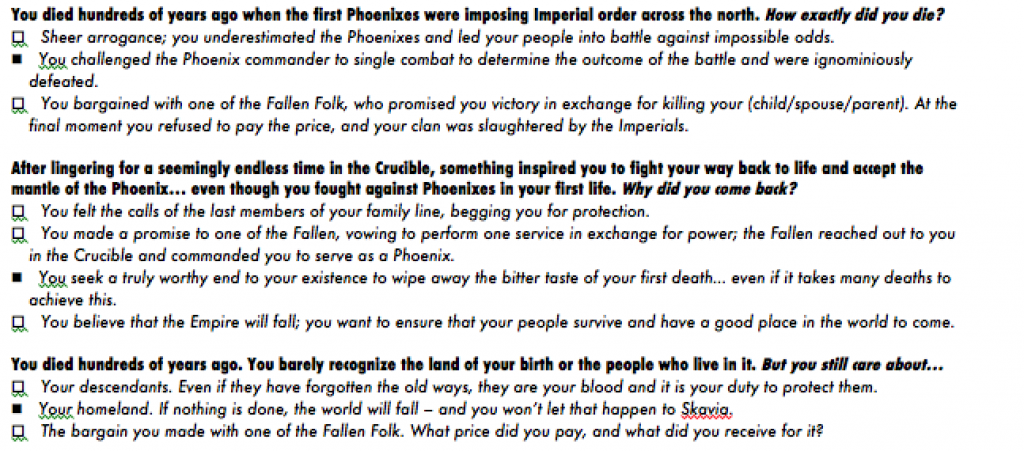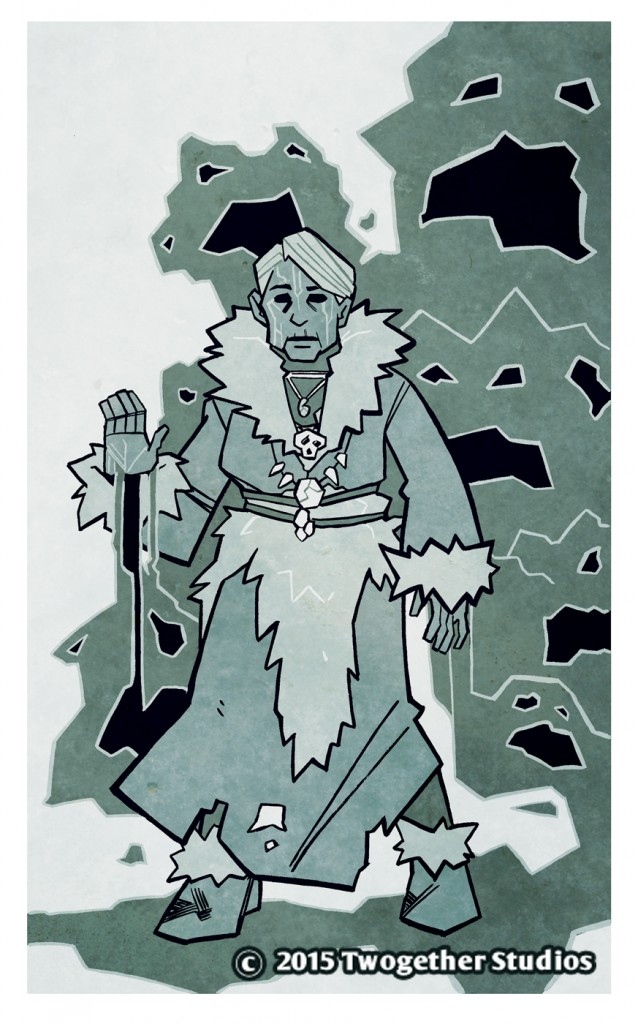 I’ve spent much of the last few weeks sick with the flu, but I’ve finally bounced back. I’m continuing to work on Phoenix: Dawn Command, and I’m excited about how the adventures are coming together. I’m still not 100% certain what we’ll be doing at Gen Con and whether there will be full demo sessions, but at the very least I’ll have a get together to discuss the game and show you how it works. The above image is from one of our stretch goals – a challenge created by the amazing Jason Morningstar.
I’ve spent much of the last few weeks sick with the flu, but I’ve finally bounced back. I’m continuing to work on Phoenix: Dawn Command, and I’m excited about how the adventures are coming together. I’m still not 100% certain what we’ll be doing at Gen Con and whether there will be full demo sessions, but at the very least I’ll have a get together to discuss the game and show you how it works. The above image is from one of our stretch goals – a challenge created by the amazing Jason Morningstar.
In other news, Fairytale Gloom is out in the wild… though it doesn’t seem to have reached all stores yet. I’m keen to hear what people think. If you’ve had a chance to play and have any questions or comments, let me know!
And finally, I wanted to dig a little deeper into the vast backlog of Eberron questions. I’m afraid I still have no concrete information about 5E Eberron development; I’m hoping there will be news of some sort at Gen Con. Today’s questions focus on warforged, the Silver Flame, and the devious daelkyr…
A very interesting point in my opinion is the conflict between the ideals of the Flame and the corruption and racism of the Church. For example about warforgeds. How are the lives of warforged living in Thrane?
This is a complicated issue. To begin with, let’s talk about racism in Thrane.
The 3.5 ECS says nothing about endemic racism in Thrane. This is a concept that was introduced in Five Nations, a book I didn’t work on. It’s not a concept I personally endorse. There’s nothing in the core beliefs of the Silver Flame that sets humanity apart or above other races. At its ultimate core it is about defending the children of Eberron and Siberys from the children of Khyber. Broadly interpreted it’s about protecting the innocent from supernatural evil… not “innocent humans.” ALL noble souls can strengthen the Flame after death, and it was originally kindled by a noble sacrifice made long before human civilization existed. Many sources feature nonhuman Thrane clerics of the Silver Flame, and one of Tira Miron’s most trusted allies was an elf avenger. Aundair doesn’t have a human majority, yet Thrane’s templars put themselves in harms way to defend Aundair from the lycanthropic threat. If anything, I would expect Thrane to have LESS racism than the other Five Nations as it is grounded in a faith that is driven to protect all innocents. So speaking personally: I didn’t come up with the idea of excessive racism in Thrane and it’s not something I embrace at my table or in my writing.
WITH THAT SAID: If I were to embrace Five Nations’ depiction of racism in Thrane, I would say that it is a relatively recent development that seems to be getting worse every day… And that it is in all likelihood a manifestation of Bel Shalor’s growing power. The Shadow in the Flame thrives on drawing out the darkness inside of people, and this would be a logical manifestation of that. I’d call out the fact that it IS in opposition to the principles of the Flame, and have a few notable voices (such as Jaela) trying unsuccessfully to steer people back to the light.
The warforged are a special case. The Church doesn’t accept that Cannith could artificially manufacture souls. Thus warforged don’t fall into the category of “innocents to be protected.” A warforged is like a sword: a tool to be used in the battle. The Treaty of Thronehold gave the warforged freedom, but it can’t give them souls… and thus, in the eyes of the faithful, they remain things. What’s been said before is that Thrane warforged often end up in various forms of indentured servitude. They are seen as tools, and the Treaty hasn’t changed that.
In my campaign one of the players is a warforged paladin and most of the hierarchy doesn’t even look at him as a living being. As my players are growing up to mid-high levels, I’m thinking: what if keeper of the flame would create him a cardinal? How would the hierarchy react? How the people? Would it be a playable role?
Certainly. In MY campaign, you can’t decide to be a paladin; you have to be called. Cannith couldn’t build a paladin. Thus, the warforged paladin is proof to those with eyes to see that warforged DO have souls and can be part of the Flame. It would be something many Thranes would have difficulty accepting, but it could ultimately cause change across Thrane… or it could trigger a hostile backlash, especially if natural doubts were fanned by the Shadow in the Flame. And as such, it is an extremely playable role.
One thing I am curious about is why did the Treaty of Thronehold include the destruction or disassembly of all of the creation forges? Why do that when you’re also including in there that all warforged are considered individuals rather than property? The way I see it, it’s like neutering an entire race…
The fact that the Treaty of Thronehold helps the warforged is incidental. Its primary purpose was to limit the power of both the Five Nations and House Cannith. At the end of the war, every nation had warforged armies of various sizes. Disbanding these armies was a symbol of standing down from military footing. In my opinion, the original draft of the treaty ordered that all warforged be destroyed; shifting this to freedom for the warforged took a serious amount of lobbying on the part of sympathizers who’d worked with warforged over the wars. But the primary intention was eliminating standing armies, and I doubt that even many of the sympathizers considered this “the birth of a new race.”
Meanwhile, the destruction of the creation forges was a way to rein in the power of House Cannith. Left unchecked, Cannith could produce armies of warforged. Already there’s reason to question if the Five Nations truly have the power to enforce the Korth Edicts; no one liked the idea of Cannith being able to field an army of its own.
So both of these actions were about the balance of power in Khorvaire, not a grand vision of the sanctity of warforged life; in all likelihood, it was a near thing that the warforged weren’t destroyed along with the forges.
Maybe the Keeper could create cardinal a paladin orc?
This seems far less likely to me. I’m actually playing an orc paladin of the Ghaash’kala in a 5E Eberron campaign (a home game run by a friend). One of these days I’ll post some of what I’ve written about the Ghaash’kala over the course of the campaign. The short form is that my paladin would have no interest in being part of the hierarchy of Thrane. He comes from a completely different culture and a different tradition of the Flame. The excessive hierarchy and traditions of the Church seem frivolous to him; he is a warrior used to being on the front line of an endless war. I could see Jaela doing something to more officially acknowledge the Ghaash’kala as comrades in faith – but I don’t think appointing one of them to be a cardinal in Flamekeep would work out well for anyone involved.
Do you think the Lord of the Blades could have some connections with an Overlord? Maybe the mourning was caused by the freeing of an Overlord; or maybe the Becoming God is nothing but a living machine for channeling the energy of an Overlord. Or maybe he is trying to create with warforgeds something like Elves did in Aerenal.
All of these things are certainly possible if it’s a story you want to tell. The Lord of Blades could have connections with an Overlord. He could even be a Lord of Dust who’s only masquerading as a warforged. Try this on for size: We’ve never said where warforged souls come from. This is because warforged souls are tiny, tiny fragments of an Overlord, tiny enough to slip through the binding of the Flame. The Becoming God is a vessel that will ultimately absorb all the souls of the warforged and recreate the Overlord. So once the vessel for the Becoming God is completed, the “Lord of Blades” may start setting up situations to kill warforged – because when they die, their spirits are sucked into the vessel of the God. The trick is that each individual soul is innocent and unique, as long as it can keep from being reabsorbed. So a warforged PC is thus a part of a great evil – but by staying alive, they are preventing that evil from being reborn and turning its power to a good purpose.
I remember somewhere you wrote that it COULD exist a good Daelkyr, even if it still would be somehow crazy. Have you ever played something like that? Could the Daelkyr join the Silver Flame? Do you think Gatekeepers would fight him anyway?
I touch on this in a reply to a comment in my blog post on The Daelkyr And Their Cults. The critical point of the issue is that you could have a “good daelkyr” in the sense that its overall agenda is intended to help the people of Eberron. However, that doesn’t mean that agenda would appear to be good to everyone else. Daelkyr are as alien as alien gets: their idea of doing good might be to change all humans into changelings, to spread a linguistic virus that transforms Khorvaire into a group mind, or something like that. In the long run this might actually promote world peace and harmony, but it’s not likely to be something the existing cultures welcome. Even a daelkyr who simply wants to protect Eberron from other forms of supernatural evil – so one that serves the same purpose as the Silver Flame – would be likely to do so in a way that’s inexplicable to humans. One option I’ve thrown on the table is the idea that the daelkyr created Dragonmarks; perhaps that’s their way of trying to help humanity against other evil forces.
The main thing is that I personally wouldn’t have a daelkyr show up in Flamekeep and have a rational discussion with Krozen and Jaela (or the PCs) about how they can join forces to fight evil. If I wanted to do this with some traditional force of evil I’d use a Lord of Dust or a Quori. The Lords of Dust are native fiends of Eberron and the Quori are tied to human dreams, and as such there is a basic foundation for understanding. While in my mind what defines the daelkyr is that there is NO foundation for understanding. The mere presence of a daelkyr causes confusion, and if it focuses its attention on you it can inflict permanent mental damage. To me this is a side effect of the fact that it’s a powerful telepath whose thoughts are so innately alien that the telepathic broadcast breaks human minds. If you touch its mind, you will go insane. To quote the ECS…
The mind of a daelkyr is a labyrinth that can swallow the thoughts of lesser creatures. Any creature who attempts to read the thoughts of a daelkyr or otherwise study its mind must make a DC 29 Will save or suffer the effect of an insanity spell.
Note that this isn’t an active power. It’s not something the Daelkyr CHOOSES to do. It is simply what happens to any creature of Eberron that touches the mind of a daelkyr.
And for all these reasons: Yes, a Gatekeeper would fight him anyway. Because ultimately it doesn’t matter what his intentions are. He’s a fundamentally alien entity who doesn’t belong in Eberron, and who innately spreads madness and corruption simply by virtue of his presence. Which may be a tragedy if he means well, but there it is.
So I’m certainly open to a story about a daelkyr who’s trying to help the people of Eberron… but I’d make his help enigmatic and potentially dangerous, not some sort of simple “creepy ally.”
Is a human mind as alien to a daelkyr as a daelkyr mind is to a human, and if not, why not? Do daelkyr suffer similar problems if they read the mind of a creature from Eberron?
No. In general aberrations are alien creatures, but you can use detect thoughts on a dolgrim, beholder or mind flayer without getting your brain fried. It’s not simply that daelkyr are alien; it’s that they are primal immortal entities who ALSO happen to be indescribably alien. So a daelkyr looking at your thoughts will going to find them very alien and puzzling… but so incredibly tiny and insignificant that it doesn’t really have a big impact.
Personally, I would put the relationship between human and daelkyr as much like the relationship between a fruit fly and a human. From your perspective the fly’s life is trivially short and relatively meaningless. Look at a single fruit fly: can you tell me what it’s thinking or the purpose behind its actions? Do you believe it feels emotions or has dreams or thoughts as you do? Meanwhile, do you think the fly understands YOU? You’re so vast that all it can really perceive is your foot or the finger descending to kill it; it doesn’t even have a full picture of what you are. Comparing lifespans you are essentially immortal. And again, do you think it understands WHY you do what you do? Perhaps you’re a scientist running an experiment in genetics. Perhaps you’re a bored child pulling the wings off insects for the fun of it. Perhaps different daelkyr represent these different things… so Belashyrra is pursuing a vast experiment (one that will take many, many human generations to show any results) while Dyrrn the Corruptor is simply the child frying ants with a magnifying glass. This allows the one daelkyr whose actions, however bizarre, do involve a vast scheme – and the other whose cruelty is purely pernicious.
Now if you WANT a daelkyr to take a personal interest in a PC as part of a storyline, go ahead. It happens that they’re a particularly remarkable fly and the culmination of a particular experiment and it’s actually keeping an eye on them to see how it plays out. But it still doesn’t understand or empathize with them; they are still just insects, even if they happen to be interesting ones.
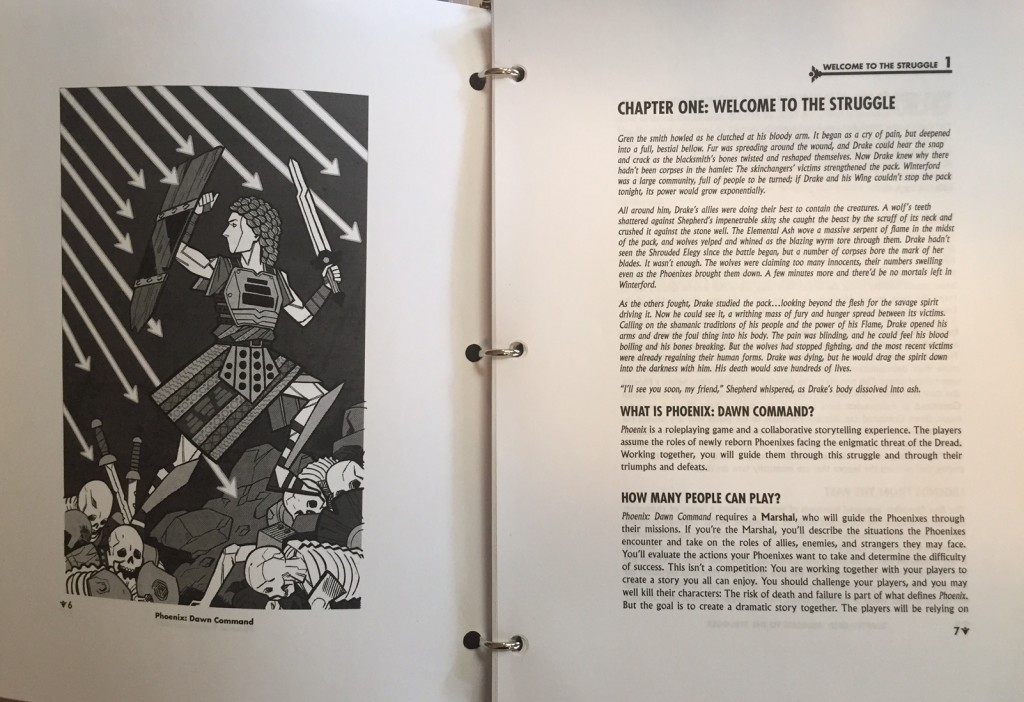 Hey folks! I’ve been given a chance to give you all a behind-the-scenes peek into the world of Phoenix: Dawn Command. For the last two years, I’ve been fortunate to sit down at the table and learn the game from both Keith and Dan, and see the eventual changes in the Phoenix system, the Schools, and the missions over the course of the game’s development. As we grow ever closer to the final release of the game, I wanted to share a couple of these new ideas that I just can’t stop talking about.
Hey folks! I’ve been given a chance to give you all a behind-the-scenes peek into the world of Phoenix: Dawn Command. For the last two years, I’ve been fortunate to sit down at the table and learn the game from both Keith and Dan, and see the eventual changes in the Phoenix system, the Schools, and the missions over the course of the game’s development. As we grow ever closer to the final release of the game, I wanted to share a couple of these new ideas that I just can’t stop talking about.

